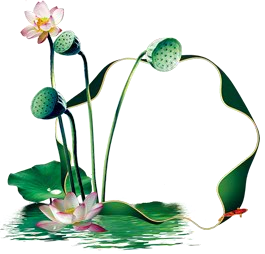4B Unit 5 Seasons 第一课时 Story time 教案设计
金莉4.21
一、教材分析:
本单元的核心教学内容是谈论季节。本课为4B Unit 5 Seasons 的第一课时Story time,是一节阅读课。本课内容是有关季节的一首小诗,在诗歌中学习季节的名称、气候以及在四季中所进行的活动。
二、学情分析:
本课将出现大量和季节有关的生词,4年级的学生虽然有一定英语基础,还是不容易掌握这些词, 为激发学生的学习兴趣,我在这节课中最大限度的采用了学生容易接受的动画和图片, 设计了有趣味性的游戏和活动,让学生能够积极参与到语言活动中来。
三、设计理念:
新课标提倡要在情境中教学,要注重培养学生的综合语言运用能力,不可单纯地上词汇教学课。强调从学生的学习兴趣、生活经验和认识水平出发,倡导体验、实践、参与、合作与交流的学习方式和任务型的教学途径达到发展学生对语言的综合运用能力。为了达到教学目标,落实教学重点、化解教学难点,在设计教学任务时,我充分考虑到了小学生的年龄特点,设计了较多的游戏和活动。
四、教法:
任务型教学法(Task-Based Language Teaching)
游戏教学法、动作教学法、合作学习法
五、教学内容 : 4B Unit 5 Seasons 第一课时 Story time
六、教学目标:
1)知识目标:
1.能够听、说、读、写表示季节的5个英语单词:
season, spring, summer, autumn, winter
2.能够听、说、读、写表示气候的4个英语单词:
warm, hot, cool, cold
3.能够听、说、读、写描述四季活动的短语:
fly kites, go boating
eat ice creams, go swimming
have picnics, go climbing
make snowmen, go skating
4.能够听、说、读、写下列句型:
In…, it is …
We like…
2)能力目标:
1.能够综合运用所学语言知识来谈论四季的名称、气候和活动等。
2. 能够描写自己最喜欢的季节。
3)情感目标:
1.让学生懂得一年之计在于春,要学会珍惜时间,努力学习。
2. 通过呈现描写不同季节的古诗词的图片,让学生感受到大自然季节更替的美妙。
3. 让学生明白在相应的季节做相应的活动,学会顺应自然,享受季节,享受生活。
七、教学重、难点:
1. 能够掌握本课知识目标。
2. 能够综合运用所学语言知识对季节进行谈论。
八、教学准备:
1. 教具的准备:multimedia, word cards
2. 板书准备: 画好季节树
九、教学过程:
连接好电脑后播放Season’s song 这首歌,吸引学生的注意力。
Step1 Organization
一、Greetings.
T: Let’s begin our class.
Hello, boys and girls. I’m Miss Jin.
Ss: Hello, Miss Jin.
T: Nice to see you.
Ss: Nice to see you, too.
二、Lead in
T: Do you like the song?
Ss: Yes.
T: What’s the song about?
S1: It’s about the seasons(学生可以说中文“季节”)
T: Correct. Read after me.
(设计意图:先播放Change seasons这首歌,然后提问学生这首歌是关于什么的,自然引出本课的课题seasons,带读后将单词写在树干上。)
T: Today, we are going to learn something about seasons.
How many seasons in a year?
Ss: Four.
T:(出示图片)What are they?
They are spring,summer,autumn,winter(分别教授四个季节单词,用之前学过的单词引导教授新单词,并写在板书上)
Step2 Presentation
一. Task 1: Watch and answer
T: Please think,what season is it now?
Ss: Spring.
T:Do you know how is the weather in spring?
Ss: Warm.(引出warm单词教学)
T: Do you want to know how is the weather in summer,autumn and winter?
Ss:Yes.
T: Let’s watch a poem and find the answers.
T:分别教授天气词汇hot,cool,cold(并板书)
|
Ticking time 1:
|
|
|
|
|
I can say the names of the four seasons.
我会说四季的名称 |
|
|
|
2.(设计意图:让学生在评价表上打“√” ,对季节名称的掌握情况进行评价。)
二.
2.T:(出示图片,点出今天第二个学习任务)Look, this is our second task.
How is the weather in each season?
Let’s watch the cartoon and find out the answers, ok?
Ss: Ok.
3. Watch the cartoon
4. T: Can you match the words with the seasons?
Ss: Yes, we can.
T: Now, I want a student to come to the blackboard and
match the words with the seasons.
You must use the sentence ‘In…, it is…’
请1个学生将单词和季节相匹配,一边贴一边用‘In…, it is…’操练句型。)
5. T:Now, Let’s say together.(让学生一起说一遍)
(设计意图:先看卡通,再通过搭配等活动让学生将气候和季节正确搭配,并操练“In…, it is…” 这一句型。)
6.
|
Ticking time 2:
|
|
|
|
|
I can say the weather of the four seasons.
我会说出四季的气候。 |
|
|
|
(设计意图:让学生在评价表上打“√”,对季节气候的掌握情况进行评价。)
三. Task3: Read, underline and learn
1. T: Now, you have already finished two tasks, let’s begin the third one.
T:(出示图片)Look, this is our third task.
What do we do in each season?
T: Boys and girls, please read the text by yourselves loudly and underline the activities we can do in each season, ok?
2. 学生自由读课文并划出在每个季节进行的活动
(设计意图:通过自由读并画出活动的方式,为学生设置明确的学习任务,培养学生的阅读能力。)
3. 依次出现四季的图片,并提问
T: In spring, it is warm.
We .
We .
We like spring.
S1: fly kites
go boating
(跟读录音一遍、配合动作带读短语几遍,贴在黑板上,并以此方法教学剩下的三个季节的活动。)
(设计意图:通过听录音、跟读、配合动作等学习方法全面调动学生的各个感官来参与单词的学习。)
|
Ticking time 3:
|
|
|
|
|
I can talk about activities in each season.
我会谈论每个季节的活动。 |
|
|
|
(设计意图:让学生在评价表上打“√”,对所学短语的掌握情况进行评价。)
Step 3 Practice
一.Task 4: Read the poem emotionally.
T: Today, we are learning a poem. Is it beautiful?
Let’s read it emotionally.
Boys and girls, look at the tip. When you read the poem, please pay attention to your pronunciation and intonation, you can also act when you read. Are you ready?
Ss: Yes. (有感情地跟读小诗一遍)
二.Task 5: Let’s dub.
1. Practice in groups of four(4人一个小组操练小诗)
T: Now, boys and girls, please practice in groups of four.
Ss: (学生4人一组进行操练)
2. 我是小小配音员
T: Now, stop! Which group wants to dub?
(选两组学生给课文配音,再次巩固短语。)
(设计意图:通过跟读、自读、配音等方式巩固所学内容。)
Step 4: Production
1. Talking show (我是小小演说家!)
T: Can you talk about seasons?
For example:
There are four seasons in a year.
They are spring, summer, autumn and winter.
In spring, it is… we…
In summer…
In autumn…
In winter…
We like the four seasons.
(同学们,先练一练,然后到讲台前面来说说季节吧!)
T: Boys and girls, practice by yourselves and then come to the blackboard and talk.
(设计意图:用“我是小小演说家”这个活动将今天所学的小诗整合成一个语篇,培养学生的综合语言运用能力。)
2. I am a poet. ( 我是小诗人!)
T: You did very well just now. Now, please write a short poem about your favourite season, ok? You can use these sentences to help you.
I like …very much.
In … it is …
I can…
I go…
…
…
I like …
(学生在作文纸上写My favourite season, 写完后到黑板前面朗诵小诗)
T: Who wants to show us your poem?
(设计意图:在前面各教学环节,学生完成了听、说、读三方面能力的训练,本环节活动意在培养学生的写作能力,也是将今天所学语言知识和本节课之前习得的语言知识进行整合的过程。)
T: Now, you have finished all the tasks, you can say the names and the weather of the seasons. You have known the activities we can do in each season. You can get the crown. Please say loudly with me,one, two, ‘ Well done!’(皇冠落下)
Step5: Homework
1. Read Story time emotionally. 有感情地读Story time
2. Write a poem about seasons.写一首关于季节的小诗
3. Preview Fun time预习Fun time
(出现图片对学生进行情感渗透)
T:Boys and girls, enjoy seasons, enjoy life! Time’s limited. It’s time to say ‘Goodbye’. See you next time. Goodbye.
Ss: Goodbye.
十、板书设计:
|
|
十一、教学反思
通过两次试教后,我发现大部分学生能掌握本课的语言知识,能根据板书谈论季节,能就最喜欢的季节写首小诗,基本上达到了本课的教学目标。在教学过程中也存在的一些问题。比如在步骤之间的过渡语运用不够自然;给学生读单词的时间过少,导致部分学生不能准确读出单词;对整个课堂的调控能力有待提高。
